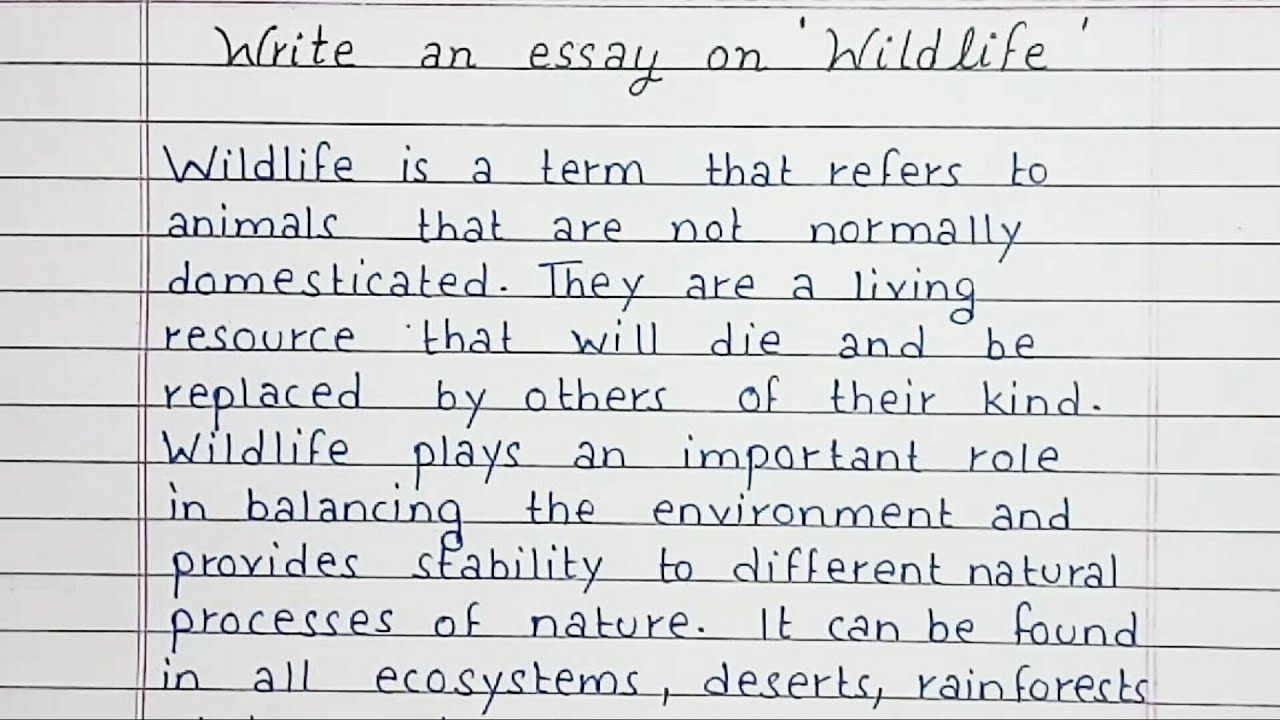A day in the life of an animal essay – Embark on a captivating journey with our essay, “A Day in the Life of an Animal.” Join us as we delve into the fascinating world of a chosen animal, unveiling its daily rhythms, unique behaviors, and the remarkable adaptations that ensure its survival in the wild.
From the moment it awakens to the time it rests, we’ll explore the intricate tapestry of an animal’s existence, shedding light on its interactions, challenges, and the vital role it plays within the ecosystem.
Introduction
The purpose of this essay is to provide a glimpse into the fascinating life of one of nature’s most remarkable creatures, the mighty lion. We will explore the lion’s habitat, lifestyle, and the unique adaptations that have allowed it to thrive in the African savanna.
Lions are the second-largest cat species in the world, after tigers. They are apex predators, meaning they are at the top of the food chain. Lions live in prides, which are social groups that typically consist of several related females, their cubs, and a few adult males.
Prides defend their territory from other lions and hunt together for prey.
Morning Routine
As the sun peeks over the horizon, the animal stirs from its slumber. Its eyes flutter open, and it stretches its limbs, yawning widely. The morning routine begins, a series of rituals that set the tone for the day ahead.
Grooming
The animal meticulously grooms itself, licking its fur to remove dirt and debris. It uses its claws or teeth to comb through its coat, ensuring that every hair is in place. This ritual not only keeps the animal clean but also helps to stimulate circulation and promote healthy skin.
Feeding
With its grooming complete, the animal turns its attention to breakfast. It hunts for food or returns to a hidden cache of provisions. The animal eats slowly and deliberately, savoring each bite. Feeding is not just about sustenance; it’s also a social activity for many animals, as they gather in groups to share meals and strengthen bonds.
Interactions with Young or Pack Members
If the animal has young or pack members, the morning routine includes interactions with them. The parent animal may nurse its young or teach them essential survival skills. Pack members may engage in playful behaviors, such as wrestling or chasing, which help to build social bonds and reinforce their hierarchy.
Midday Activities

As the sun reaches its zenith, the animal’s activities shift from the morning’s foraging to the midday’s focus on hunting and social interactions. These midday activities are crucial for the animal’s survival and well-being.
Hunting and Foraging Behaviors
The animal’s hunting or foraging behaviors are driven by the need for sustenance. The animal employs various strategies to locate and capture prey or gather vegetation. These strategies may involve stealth, speed, or collaboration with other members of its species.
Social Interactions with Other Species
Midday is often a time for social interactions between the animal and other species. These interactions can range from cooperative hunting to predator-prey relationships. The animal’s behavior in these interactions is influenced by factors such as territory, dominance, and the availability of resources.
Adaptations for Survival in the Environment
The animal’s adaptations for survival in its environment play a crucial role in its midday activities. These adaptations may include physical characteristics, such as camouflage or sharp claws, as well as behavioral adaptations, such as group hunting or seasonal migrations.
Afternoon Rest

As the afternoon sun casts its golden rays, the animal seeks solace in its preferred resting spots. Whether it’s a cozy den, a shady tree, or a secluded nook, these havens provide respite from the day’s activities.
The animal’s sleep patterns and behaviors vary depending on its species. Some animals, like cats, are known for their frequent naps throughout the day, while others, such as lions, may sleep for extended periods during the hottest hours.
Importance of Rest
Rest is crucial for the animal’s well-being. It allows the body to repair and rejuvenate, replenishing energy levels and promoting optimal physical and mental health. Adequate rest also supports cognitive function, reduces stress, and strengthens the immune system.
Evening Activities
As the sun begins to set, animals prepare for the nightfall. They engage in various activities to ensure their safety and well-being during the night.
One important aspect of evening activities is communication. Animals use a variety of methods to communicate with each other, including vocalizations, body language, and scent marking. These signals help them maintain social bonds, establish territories, and coordinate their movements.
Defense Mechanisms
As darkness falls, animals become more vulnerable to predators. To protect themselves, they employ various defense mechanisms. Some animals, like lions and wolves, hunt in packs, which increases their chances of success and deters predators.
Other animals, like rabbits and deer, rely on their agility and speed to evade predators. They have keen senses and can detect danger from afar, allowing them to escape quickly.
Some animals, like porcupines and skunks, have specialized adaptations for defense. Porcupines have sharp quills that they can erect when threatened, while skunks can spray a foul-smelling liquid that repels predators.
Challenges and Adaptations

Animals face a variety of environmental challenges that can affect their survival. These challenges include finding food, avoiding predators, and dealing with extreme weather conditions. Animals have evolved a variety of physical and behavioral adaptations that help them overcome these challenges.
Physical Adaptations, A day in the life of an animal essay
Physical adaptations are traits that help animals survive in their environment. These adaptations can include things like the shape of their body, the color of their fur, and the type of teeth they have. For example, animals that live in cold climates often have thick fur to keep them warm.
Animals that live in deserts often have long legs to help them travel long distances in search of food and water.
Behavioral Adaptations
Behavioral adaptations are ways that animals change their behavior to survive in their environment. These adaptations can include things like the way they find food, the way they avoid predators, and the way they raise their young. For example, some animals migrate to warmer climates during the winter.
Some animals live in groups to protect themselves from predators. Some animals build nests to raise their young.
Natural Selection
Natural selection is the process by which animals with traits that are better suited to their environment are more likely to survive and reproduce. Over time, this can lead to the evolution of new species. For example, the peppered moth is a species of moth that lives in England.
During the Industrial Revolution, the trees in England became covered in soot, which made the light-colored peppered moths more visible to predators. As a result, the dark-colored peppered moths became more common because they were better able to camouflage themselves against the dark trees.
Conservation and Threats
The conservation status of the animal varies depending on the species and its geographic location. Some species are considered endangered or critically endangered, while others are relatively stable or even thriving. The threats faced by animals and their habitats are numerous and complex, including habitat loss, pollution, climate change, and illegal wildlife trade.
Habitat Loss
Habitat loss is one of the most significant threats to animals. As human populations grow and expand, natural habitats are converted to other uses, such as agriculture, development, and mining. This loss of habitat can fragment populations, making it difficult for animals to find food, mates, and shelter.
It can also lead to increased competition for resources and an increased risk of predation.
Pollution
Pollution can also have a devastating impact on animals and their habitats. Air pollution, water pollution, and soil pollution can all harm animals directly or indirectly. Air pollution can cause respiratory problems, while water pollution can contaminate drinking water and food sources.
Soil pollution can damage plants, which can then have a ripple effect on the animals that depend on those plants for food and shelter.
Climate Change
Climate change is another major threat to animals. As the climate changes, habitats are changing, and animals are being forced to adapt or move to new areas. Some animals are able to adapt to these changes, while others are not.
Climate change can also lead to more extreme weather events, such as hurricanes, floods, and droughts, which can also harm animals and their habitats.
Illegal Wildlife Trade
Illegal wildlife trade is a major threat to many animal species. Animals are killed for their fur, skin, meat, or other body parts, which are then sold on the black market. This trade can have a devastating impact on animal populations, and it can also contribute to the spread of disease.
Conservation Measures
There are a number of things that can be done to protect animals and their habitats. These include:
- Protecting and restoring natural habitats
- Reducing pollution
- Mitigating the effects of climate change
- Cracking down on illegal wildlife trade
- Educating the public about the importance of conservation
By taking these steps, we can help to protect animals and their habitats for future generations.
Conclusion: A Day In The Life Of An Animal Essay
In conclusion, the daily life of this animal species revolves around a complex interplay of activities, adaptations, and challenges. Understanding these intricate behaviors is paramount for effective conservation efforts, as it allows us to tailor strategies that align with their specific needs and vulnerabilities.
Moreover, the animal’s ecological significance underscores its vital role in maintaining ecosystem balance and biodiversity.
By safeguarding the well-being of this species, we not only protect its existence but also contribute to the preservation of its habitat and the wider ecosystem it inhabits. This interconnectedness highlights the importance of adopting a holistic approach to conservation, one that encompasses not just individual species but the entire web of life they are part of.
End of Discussion
As we conclude our exploration of a day in the life of an animal, we gain a profound appreciation for the intricate complexities that govern its existence. Understanding the rhythms and behaviors of these creatures is not only captivating but also essential for conservation efforts and safeguarding the delicate balance of our planet.
Essential FAQs
What is the purpose of a day in the life of an animal essay?
It provides insights into the daily routines, behaviors, and adaptations of a specific animal, offering a glimpse into their fascinating world.
What types of animals can be featured in such essays?
The focus can range from common pets to exotic wildlife, exploring the diverse behaviors and adaptations found across the animal kingdom.